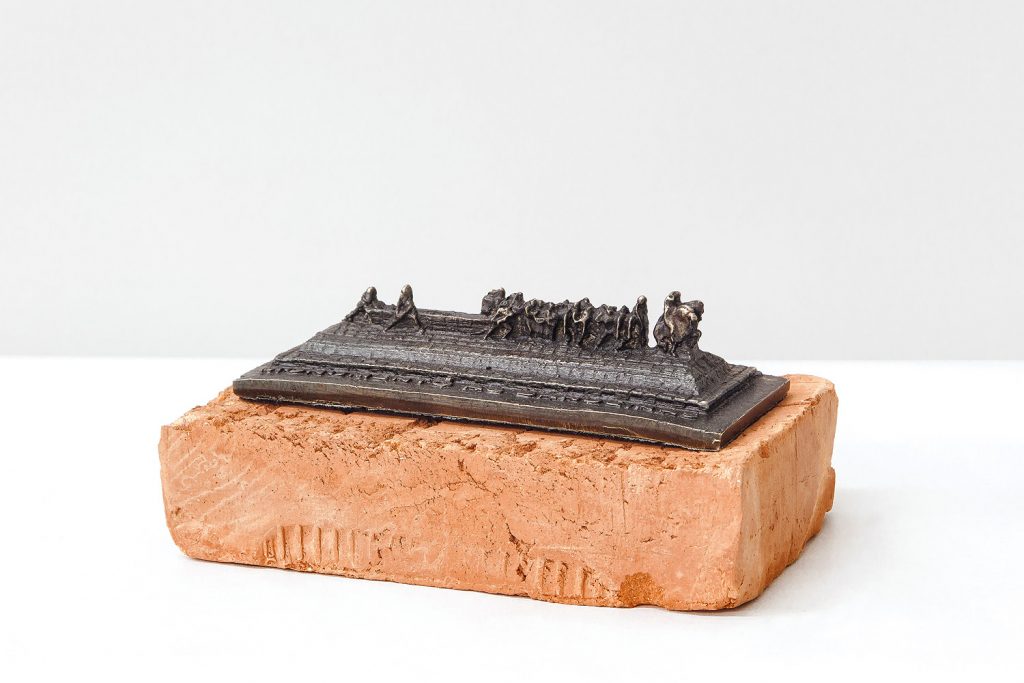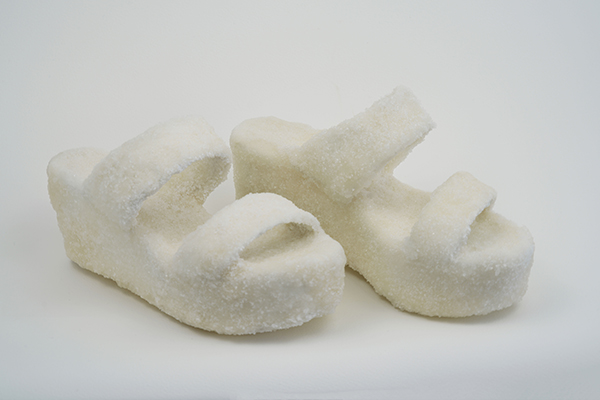GALERIA LEME’S ARTISTS PARTICIPATE IN EXHIBITION AT INSTITUTO MOREIRA SALLES ABOUT THE LIFE OF CAROLINA MARIA DE JESUS
Rebeca Carapiá, Flávio Cerqueira, Tiago Sant’Ana and Jaime Lauriano participate in a group exhibition at Instituto Moreira Salles. “Carolina Maria de Jesus: A Brazil for Brazilians” is dedicated to the trajectory and literary production of the author from Minas Gerais, who became internationally known with the publication of her book “Quarto de despejo” (English title: “Child of the Dark: The Diary of Carolina Maria de Jesus”), in August 1960.
The curatorial project by Hélio Menezes and Raquel Barreto aims to present the author’s production, in addition to include artworks that relate to the narratives written by Carolina.
FLÁVIO CERQUEIRA | Uma palavra que não seja esperar, 2018 | Bronze | 175 x 38 x 49 cm

“The image of a young black woman carrying a pile of books on her head relates to some references, which I consider important. Women who have carried a can of water on their heads, in order to feed their family.
The act of replacing the can with books is to emphasize that only through culture and education we can understand the past and build a future with more possibilities for change, because through education we become more inquisitive, contesting, and we can occupy spaces that are not occupied by past generations.
Etiquette classes, where wealthy class girls practiced their posture with books on their heads. At work, I put a larger number of books so that this figure keeps its head up, always looking straight ahead. The title indicates that of all the words and stories written in the books she carries, the only word she cannot accept is the word WAIT, because she believes it is time for change, time to create new narratives and bring new characters to occupy the prominent places and be a reference and a representative for future generations” – Flávio Cerqueira
JAIME LAURIANO | Ordem e Progresso, 2015 | transformer, timer, thermostat, wires and iron | 160 x 100 x 100 cm

In the “Bandeirantes” series, miniatures that pay homage to the bandeirantes purchased at flea markets, antique fairs and auction houses are remade from a foundry of brass and ammunition cartridges used by the Military Police and the Brazilian Armed Forces. As a base for the sculpture, a solid cube was built using the technique of rammed earth.
The choice to use ammunition cartridges used by the Military Police and the Brazilian Armed Forces was made to highlight the centrality of the figure of true genocides, such as the bandeirantes, in the construction of national identity and the notion of security and national sovereignty. This fact is clear in the various monuments, squares and highways in honor of the bandeirantes. However, the most perverse facet of these tributes is found in those paid by the state’s armed wing, such as: the OBAN (Operation Bandeirante), information, investigation and repression center of the military dictatorship, which had Carlos Alberto Brilhante Ustra its best known name; or the Batalhão Bandeirante (BINFA-14), a special operations group from the Brazilian Air Force (FAB); among others.
REBECA CARAPI´Á |Palavras de ferro e ar – Escultura 9 (da série Como colocar ar nas palavras), 2020 | Iron | 221,5 x 121 cm

In the series “Como colocar ar nas palavras”, the artist creates, through installations, drawings and sculptures, a cosmology around the conflicts related to the norms of language and the body, in addition to expanding a geopolitical debate that involves memory, the economy of precariousness, technologies and the power relations between speech and word.
TIAGO SANT’ANA |Sapatos de açúcar, 2019 | sugar and synthetic material | 25 x 10 x 13 cm (cada)

The so-called “tamancos de forra” were accessories used by black women who managed to conquer their freedom in colonial Bahia – often because they worked under a “gain” regime. Here, in addition to the shoes themselves – precarious symbols of a freedom only announced but never fully achieved – the robust platforms were used to give physical height to the bodies, giving them an impression of grandeur and haughtiness.
No wonder, this type of footwear starts to inhabit the urban imaginary of black women sellers of delicacies, being a recurrent accessory of those known (generically) as “baianas”. In the specific case of this piece, there is an approximation of narratives from the popular imaginary that interconnect the idea of shoes as a symbol of conquest for the freedom of enslaved people, while shoes are formed by the very material that catalyzes the processes of subjugation and racial abjection in Brazil: sugar.
For more information access Instituto Moreira Salles’ website.